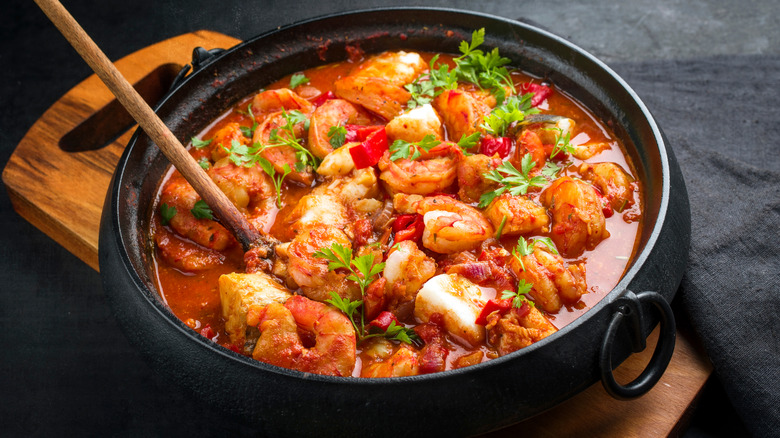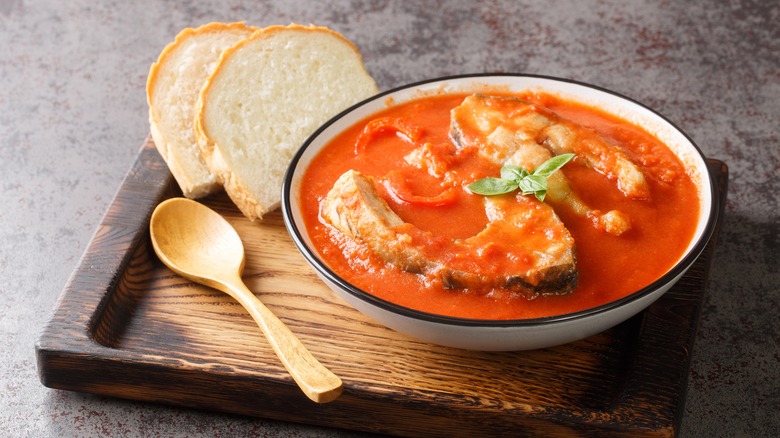What Exactly Is Cioppino And How Did It Get Its Name?
If you've ever walked along Fisherman's Wharf in San Francisco, chances are you've caught a whiff of cioppino; if you're adventurous, you may have even tried it. Cioppino (pronounced chuh-pee-no) is also known as San Francisco fisherman's stew, and it's simply seafood stew cooked with tomatoes and wine, then served alongside toasted bread. Since this is San Francisco we're talking about, ideally, it's served with sourdough.
Since the primary ingredient is "catch of the day," you get a lot of variety with cioppino, but if it's the real deal, it's probably filled with fresh fish caught from the Pacific Ocean. Usually, this means clams, crab, shrimp, mussels, or scallops. However, if the stew is prepared outside San Francisco, then you're likely to see other, more local ingredients tossed into the broth. Whatever fish you choose, it's the addition of tomatoes and white wine that transforms the seafood medley into cioppino.
San Francisco fisherman's stew
The dish has a long history, which dates back to the late 1800s. While some specifics vary in different retellings of the story, it's widely accepted that cioppino was invented in north San Francisco by Italian immigrants, mainly from Genoa. At the time, many fishermen worked off the shore of Meigg's Wharf, a long pier in North Beach that used to exist near the modern-day Fisherman's Wharf (until the 1906 earthquake destroyed it). At the end of a long day of fishing, different fishermen would contribute pieces of their catch into a single stew, along with some herbs and tomatoes, leading to what's now called cioppino.
A San Francisco urban legend claims that the name comes from those Italian-American fishermen saying "chip in" in a heavy accent, although it's much more likely that it comes from the Northern Italian "ciuppin," or fish soup. However it came about, fisherman's stew is now a common sight at restaurants in San Francisco, including some restaurants that specialize in it.
Variations on cioppino
There are similar fish soups and stews in different parts of the world, often with the seafood changing to reflect the local catch of the day. In some ways, cioppino is the Italian-American version of French bouillabaisse, which is a spicy stew made with mixed fish and vegetables. Or there's Creole fish stew, which uses similar seasonings as jambalaya but without the rice. There's also Brazilian moqueca, a seafood stew made with red palm oil and plenty of peppers.
Fisherman's stew shouldn't be confused with chowder, a thick fish soup made with cream and served with oyster crackers. Cioppino has more in common with the red, tomato-heavy Manhattan clam chowder than its white New England variant, which is much creamier. Different kinds of chowder can have as much variety as fishermen's stew, although clams are by far the most famous ingredient. Still, seafood chowder does exist, with "catch of the day" as its main ingredient. Fishermen mixing the day's catch into a single soup has a long history everywhere.


